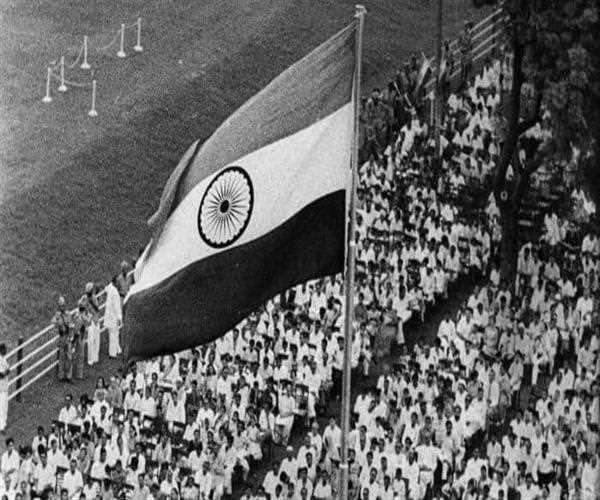
12-Sep-2024 , Updated on 9/12/2024 5:14:52 AM
India's independence: Redlining the Freedom Fighter's effort
Since the Indian independence movement was kind of a one-of-a-kind political, social, and mass struggle against a foreign colonial, it can hardly be an overstatement to say that the freedom struggle is deeply embedded in pages of its history. This freedom movement was a long-drawn struggle over almost a century with thousands and millions sacrificing their lives or going to jail in hopes of leading India into independence.
The story of independence for India is not reduced to any one person or movement. INC (Indian National Congress) was established in 1885 representing a significant political forum for articulating the need for increased self-governance but there were numerous revolutionary organizations, regional uprisings, and leaders who all played their part as well. These efforts spanned from nonviolent, diplomatic approaches of leaders like Mahatma Gandhi to more aggressive and militant tactics of revolutionaries such as Bhagat Singh, and Subhas Chandra Bose among others.
The Prehistory of Organized Movements
The First War of Independence, or Revolt of 1857 has often been considered as a harbinger of the organized Indian quest for freedom. What marked the discontent of this revolt, throwing up in its horns from all over was Indian soldiers turning against British rule at many military centres, along with peasants and local rulersThis large–scale though more or less undisorganized uprising is one such instance. Even though the British Empire subjugated the revolt and further strengthened its dominance, it sowed seeds for freedom fighters to ripen shortly. Its light shone upon the possibility of this new and growing force of resistance as it drew a line in by now visible sand, one that would provide in time an intimation of collective action.
However, the nature of this fight for freedom changed after 1857 from a purely revolutionary and insurrectionary stage to a modern folk mass movement. Some intellectuals, reformists, and leaders started to work on a vision for India that would be free from British rule which bore the birth of political organizations like the Indian National Congress (INC)
The moderate politicians and the early years of Congress
In the meanwhile, in the late 19th and early 20th centuries, leaders described as moderates by (later) standards sought a larger share of governance through other channels. Leaders, the likes of Dadabhai Naoroji, Gopal Krishna Gokhale, and Surendranath Banerjee advocated for constitutional reforms using petitions to communicate with the British. They would appeal to British liberal values and demand concessions, and they did it without a shot being fired.
Dadabhai Naoroji, advocated early the term ‘"drain of wealth", explaining how Britain was economically exploiting India to replenish its exchequer. His and other moderates' political works were like an intellectual precursor to the critique of British imperialism, as well as for Indian self-rule / "Swaraj". The moderate phase, however, fared no better. Their demands were dismissed by the British government, which only led to growing frustration within Congress.
The Rise Of Extremists And The Urgency For Swaraj NOW
The radicals (largely synonymous with extremists) were a small, but influential faction in the Congress founded in 1885. Leaders such as Bal Gangadhar Tilak, Bipin Chandra Pal, and Lala Lajpat Rai started demanding the opportunity of self-rule which is called Swaraj in their language. They were also less interested than the moderates in putting faith solely on petitions and British justice. They enunciated mass agitation, boycotts, and swadeshi movements.
Emergence of Extremists and Urgent Demand for Swaraj
In this period there was a split in the Congress, with a group of young leaders from all parts of the country coming out to challenge him and constituting for want of another name what is called extremists now (extremist here does not mean extremist like they harm people but …) Leaders like Bal Gangadhar Tilak, Bipin Chandra Pal and Lala Lajpat Rai started demanding the Swaraj (Self-rule) as only solution. Unlike the moderates, they were less prone to petition and reliance on British justice alone. They agitated and boycotted on a mass scale, and used swadeshi materials.
The slogan of Tilak, "Swaraj is my birthright and I shall have it" seemed like evening prayers to the millions of Indians. He helped massify nationalism when he organized public festivals and events of all kinds. Yet, for all of their influence, the extremists did not possess the organizational muscle to rally an entire people.
When Gandhi Arrived the Non-Cooperation Movement
The year 1915 signified a major turning point in the struggle for independence with Gandhi coming back to India. Gandhi, by launching the civil disobedience movement and advocating his philosophy of non-violence (ahimsa) for attaining independence reoriented all political activity in a fresh direction with his method of truth-force as well as non-cooperation against the British government. He expressed his idea of Swaraj using mass mobilization and civil disobedience while advocating a need for Indians to refuse cooperation with the British, boycott foreign goods, and embrace self-reliance.
The Non-Cooperation Movement (1920-22), led by Gandhi, was the earliest serious effort to mobilize across broad sections of India. Boycott of British goods, schools, and institutions was held by millions of Indians. People from different sections of society, peasants, workers, and students including women took part in this movement which was a considerable expansion of freedom struggle.
However, Gandhi called off the movement in 1922 after police were set on fire and killed several policemen (i.e. Chauri Chaura incident). Gandhi thought that the movement was taking a turn towards violence (which broke his principle of non-violence) Many leaders and revolutionaries became discontented which led to frustration over the suspension of the Non-Cooperation Movement as many felt that much more aggressive measures had to be taken.
Youth and Revolutionary Movements
Most of the time Gandhi resorted to non-violence as a modus operandi, but many more leaders and revolutionists preferred an armed resistance that could force freedom on them. Bhagat Singh, Chandrashekhar Azad, Suljhan Sing, and Sukdeve all were part of the Hindustan Socialist Republican Association( HSRA) known for promoting a big-armed struggle against the British.
Bhagat Singh, for example, achieved cult status in the freedom struggle due to his bravado and swashbuckling acts like assassinating British police officer J.P. Saunders; or bombing of Central Legislative Assembly in 1929. Singh and his associates were arrested, tried, and eventually hanged where their execution turned them into martyrs who inspired many more generations of Indians in the struggle for independence.
They were the more radical and less patient wing of the freedom struggle. They scorned the slow constitutionalist reforms and non-cooperation, believing violence to be a legitimate weapon for securing independence. Their courage and strides of course provided inspiring felicity to the young Indians for these fighters became a fearless stand in opposition against the British Regime.
Non-cooperation Movement and Dandi Salt March
In 1930 he initiated a Civil Disobedience Movement with Gandhi marching to Dandi renamed Salt March which became one of his most successful mass movements. Gandhi and his followers made a 240-mile trek to the village of Dandi on India's western coast, where they began making salt in defiance of British laws that taxed it. This passive resistance to an unjust law served as a flashpoint for global attention and sparked the involvement of millions of native Indians in this movement.
The Civil Disobedience Movement witnessed people in several regions of India refusing to pay taxes, boycotting British goods, and breaking any colonial law. There was also more participation by women, notably due to leaders like Sarojini Naidu and Kamaladevi Chattopadhyay, who encouraged more women to be involved in the struggle. Unfortunately, the British responded viciously, arresting thousands of activists, including Gandhi himself. It would take negotiations with the British for Gandhi to suspend the Civil Disobedience Movement temporarily. The meeting that ended with the Gandhi-Irwin Pact of 1931 led to the suspension of the civil rights movement. However, its significant impact was evident in how it weakened British rule and rejuvenated the Indian nationalist movement.
Subhas Chandra Bose and INA
Subhas Chandra Bose epitomized this other facet of the freedom struggle. Gandhi's never-violent tactics disillusioned Bose who believed that the only way to secure independence for India was through an armed struggle. He brought together the Indian National Army (INA) with Japanese assistance during World War II, trying to expand a military crusade against the British.
While the INA was hardly effective, Bose's efforts introduced a fresh facet to the freedom struggle. One of the greatest inspirations in many Indians who rose for an Indian free from Britain with his vision was none other than Bhagat Singh, a huge part of accelerating more and more pressure on the British government.
The Quit India Movement & The Last Straw
The Quit India Movement was the final major mass protest against British Rule in India, preceded only by the 1919 Jallian Wala Walabagh Massacre and Non-cooperation Movement (1920-22). In sharp contrast to Britain´s war-time reluctance over the suggestion of full independence for India, Gandhi demanded that the British “Quit India” at once. The British authorities reacted with unprecedented repression, arresting tens of thousands of leaders and activists — including Gandhi. Short-lived but rent, the movement sparked massive protests, strikes, and uprisings all over Spain.
The Quit India Movement was the last nail of British rule. These pressures, by the end of World War II, rendered the British precarious and in near-economic despair. After the Second World War, in 1947 negotiations between INC and the Muslim League regarding the independence of India from the British government left to partition of India into independent union territories with Pakistan created as a separate country.
These concerns remain the immediate focus of our collective effort.
The freedom struggle of India was a combined endeavour that encompassed the sacrifices, selfless service, and efforts of millions ranging from moderates-extremists to revolutionaries-peaceful agitators. The activities of the freedom fighters from Gandhi and Nehru to Bhagat Singh, Subhas Chandra Bose, and numerous others cannot be taken as disparate efforts but as a long-drawn process that spanned over decades.
This liberty for India did not come as someone’s charity but with the sacrifice of millions of lives. When we tell the story of India's independence through high politics and great men, we unwittingly paper over collective action in India by ordinary Indians which played an outsized role (if not more) than the elites.

Student
Economics can be broken down into microeconomics, which looks at individual decisions, and macroeconomics, which is concerned with the economy as a whole. Both types of economics utilize historical trends and current conditions to inform business decision-making and make predictions about how markets might behave in the future. Students who choose to study economics not only gain the skills needed to understand complex markets but come away with strong analytical and problem-solving skills.
Join Our Newsletter
Subscribe to our newsletter to receive emails about new views posts, releases and updates.
Copyright 2010 - 2025 MindStick Software Pvt. Ltd. All Rights Reserved Privacy Policy | Terms & Conditions | Cookie Policy